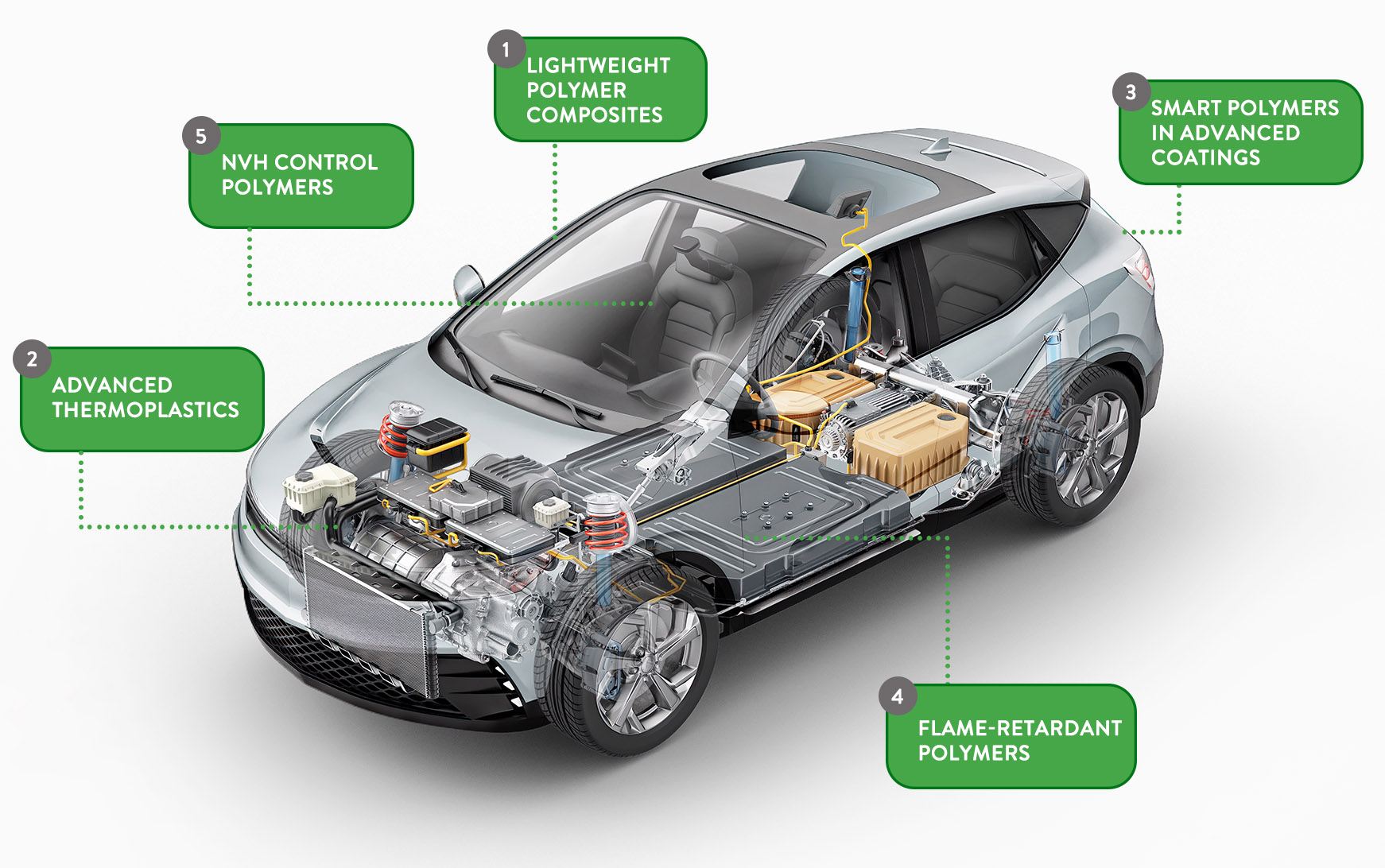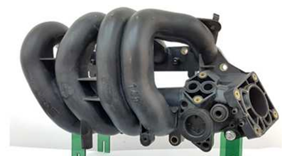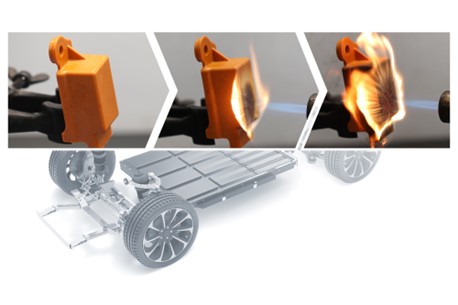How Do Polymer Innovations Enhance Automotive Performance?

The automotive industry leads in material innovation, and polymers play a crucial role in shaping the design and manufacturing of today’s vehicles.
Polymers, ranging from lightweight composites to smart materials, enable automakers to meet performance, sustainability, and safety demands. As the industry evolves, advanced polymer development and application will be crucial for driving the future of mobility. These advancements will play a significant role in shaping the competitive automotive market.

Polymers are transforming the automotive industry, helping automakers meet the demands of performance, sustainability, and safety in an increasingly competitive market.
The Power of Lightweight Polymer Composites
One of the most significant trends in the automotive industry is using lightweight polymer composites to replace heavier materials like steel and aluminum. In particular, Carbon Fiber Reinforced Polymers (CFRP) and Glass Fiber Reinforced Polymers (GFRP) are at the forefront of this innovation. These materials offer an exceptional strength-to-weight ratio, crucial for improving fuel efficiency and reducing emissions.
For example, CFRP is employed in high-performance vehicles, such as the BMW i3, which it substantially reduces weight—up to 75-80% lighter than steel. This weight reduction improves fuel efficiency and offsets the additional weight of components like batteries in electric vehicles.
Similarly, automakers use GFRP in automotive body panels and structural components, reducing weight by 40-60% compared to conventional metals while maintaining the required strength and stiffness.
You can also read: Heavier Cars, Lightweight Materials: A Modern Paradox
The Role of Thermoplastics in the Automotive Materials
Thermoplastics are increasingly becoming a cornerstone in automotive manufacturing, offering unmatched versatility and superior performance characteristics. High-performance polyamides and Polyphenylene Sulfide (PPS) are among the most notable thermoplastics used in the industry, particularly valued for their ability to withstand extreme thermal and chemical conditions. These materials have become indispensable in the production of under-the-hood components, such as engine covers, intake manifolds, and electrical connectors, where the ability to withstand elevated temperatures and harsh environments is critical.

Ford Puma 1.4 Engine intake.
Ford exemplifies the use of Polyamide 66 (PA66) in automotive manufacturing. The company integrates PA66 into the production of air intake manifolds across its vehicle models.
By choosing PA66, Ford significantly reduces component weight compared to traditional aluminum, which directly enhances fuel efficiency and lowers emissions. Additionally, PA66 provides excellent durability and chemical resistance, ensuring these components remain dependable under the harsh conditions of an engine bay.
You can also read Polyplastics’ New PPS Resin Withstands Thermal Runaway in EVs
Revolutionizing Car Design with Smart Polymers
Smart polymers, such as Shape Memory Polymers (SMPs) and conductive polymers, are advancing automotive materials. For example, SMPs adapt their shape in response to temperature changes or stimuli, making them ideal for adaptive aerodynamics and self-healing coatings.
Additionally, researchers in China and the Netherlands pioneered a self-healing shape memory composite (SMC) coating. They achieved this by integrating thermoresponsive SMPs with carnauba wax microparticles. At 90°C, the carnauba wax melts, sealing the repaired area effectively.

Self-Healing Coatings. Courtesy of the American Coating Association.
Moreover, optical stereomicroscopy, SEM, and electrochemical methods show that the wax successfully restores the coating’s barrier properties through its sealing action. This innovation highlights the potential of combining shape memory materials with self-healing agents, significantly enhancing protective coatings’ durability and longevity.
Safeguarding EVs with Flame-Retardant Polymers
Flame-retardant polymers have become essential in automotive design, particularly as electric vehicles (EVs) grow in popularity. Engineers specifically design these materials to resist ignition and slow the spread of flames, providing crucial protection against fire hazards, particularly in the high-risk environments of EV battery enclosures.
Recent advancements highlight the significant role of flame-retardant polymers in enhancing vehicle safety. For example, SABIC’s STAMAX™ 30YH570 long glass fiber polypropylene (PP) resin has shown exceptional performance in providing thermal insulation and flame resistance for EV battery modules. In thermal runaway tests, this material effectively suppressed heat transfer and thermal propagation, preventing catastrophic fire incidents in lithium-ion batteries.
Similarly, Freudenberg Sealing Technologies has introduced Quantix® ULTRA, a new class of thermoplastics capable of withstanding temperatures up to 1,200°C for extended periods. This material not only provides superior fire protection but also supports lightweight construction, a critical factor in electric vehicle design.

Quantix ULTRA is an innovative material that produces flame protection barriers for the cooling system of lithium-ion batteries. Courtesy of Freudenberg Sealing Technologies
Polymers for Noise, Vibration, and Harshness (NVH) Control
Improving the driving experience is a key focus for automakers, and polymers are playing a significant role in noise, vibration, and harshness (NVH) control.
For example, Dow Inc. has developed innovative polymer-based sound-dampening solutions that optimize the acoustic architecture of vehicles. These materials work by absorbing and isolating vibrations, thereby minimizing noise transmission throughout the vehicle structure.
Acoustic Architecture. Courtesy of Continental Engineering Services
Furthermore, companies like Continental Engineering Services are leveraging advanced polymer technologies in their NVH consulting and engineering services. By integrating these materials early in the design process, automakers can significantly improve vehicle acoustic comfort while maintaining efficiency. Additionally, this approach enhances overall ride quality and contributes to customer satisfaction by ensuring a quieter, more comfortable driving experience.
